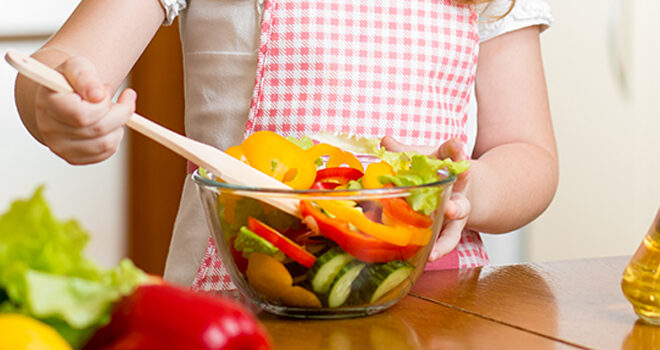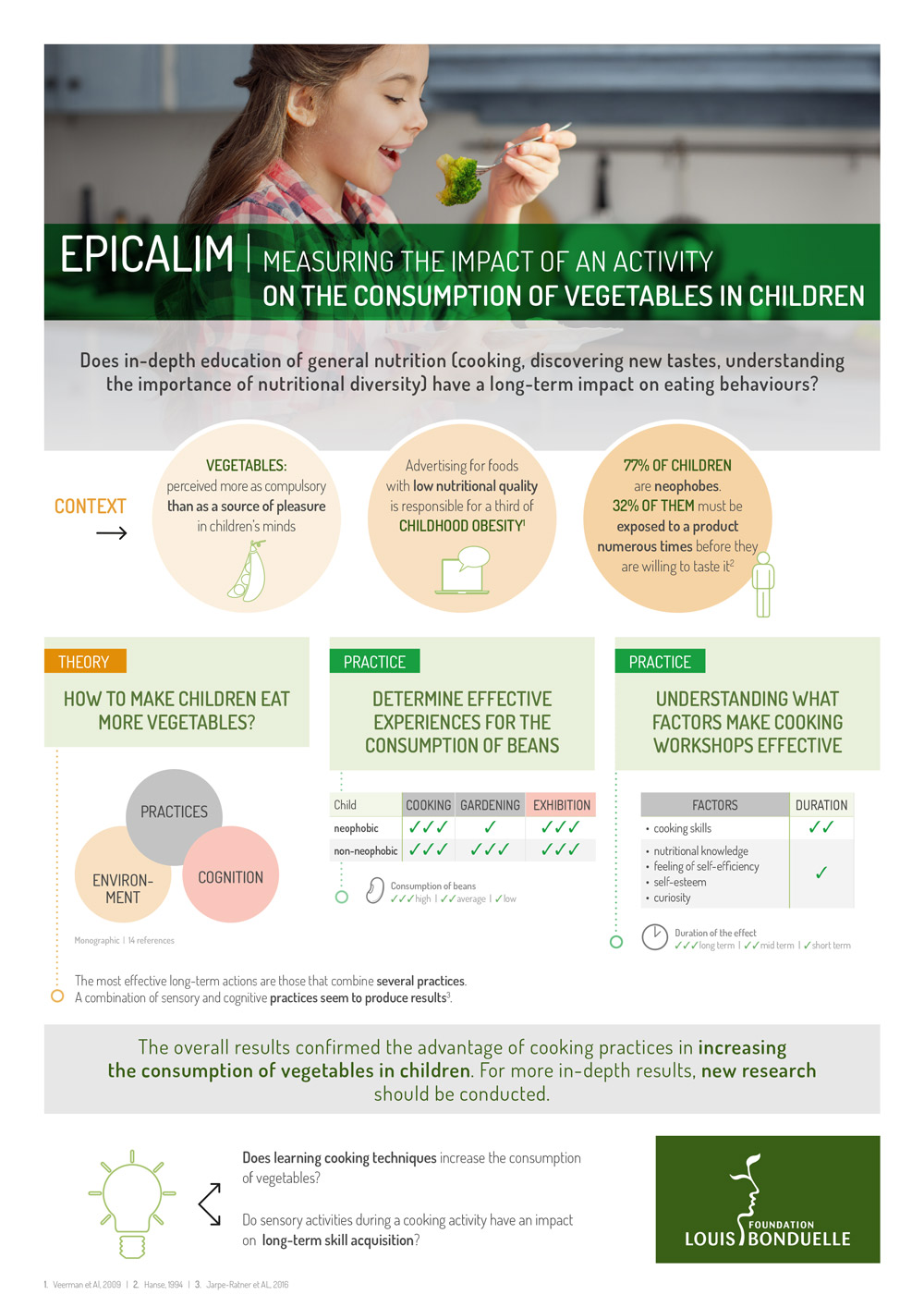Amidst multiple campaigns to prevent childhood obesity, the Louis Bonduelle Foundation sought to examine their impact. Results from three studies helped establish which combination of actions are the most effective: learn about the Epicalim results.
Nutrition education in child development
Childhood is an intense learning period during which children discover the world that surrounds them and develop habits, in particular eating habits. Children like foods they are familiar with, and especially sweet foods reminiscent of breastmilk. Nutrition education is key to helping them become familiar with vegetables.
To encourage a wide and varied consumption of vegetables, it is important to get children used to them at a young age. The nutritional advantages of vegetables have been proven. The question that remains is how to effectively reach children and how to ensure long-term learning.
From theory to practice
In recent years, there have been a large number of prevention actions regarding nutrition: prevention campaigns, nutrition training, exhibitions, etc. The Louis Bonduelle Foundation decided to measure the impact of these different techniques in order to develop effective methods. The Epicalim study, a set of three studies, collects both on-the-ground and theoretical data. The study provides a solid base of knowledge for the effectiveness of prevention techniques.
To understand the Epicalim study’s interactions and considerations, discover our infographic: 3 concurrent studies to arrive at a conclusion.
For further information, read our article: Nutrition education: improving its impact



 Sorrel
Sorrel  Dandelion greens
Dandelion greens  Vegetable garden: growing shallot
Vegetable garden: growing shallot 










